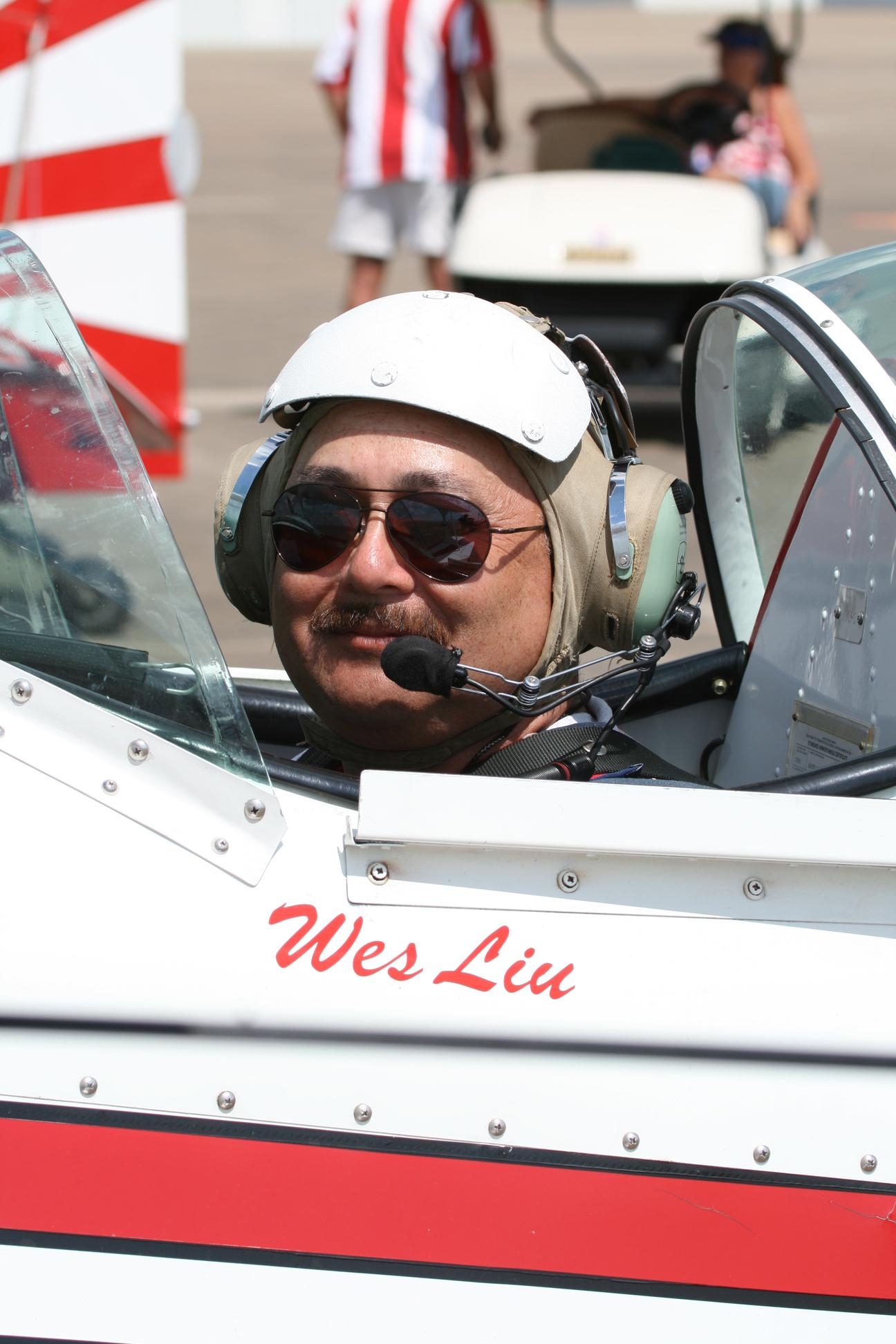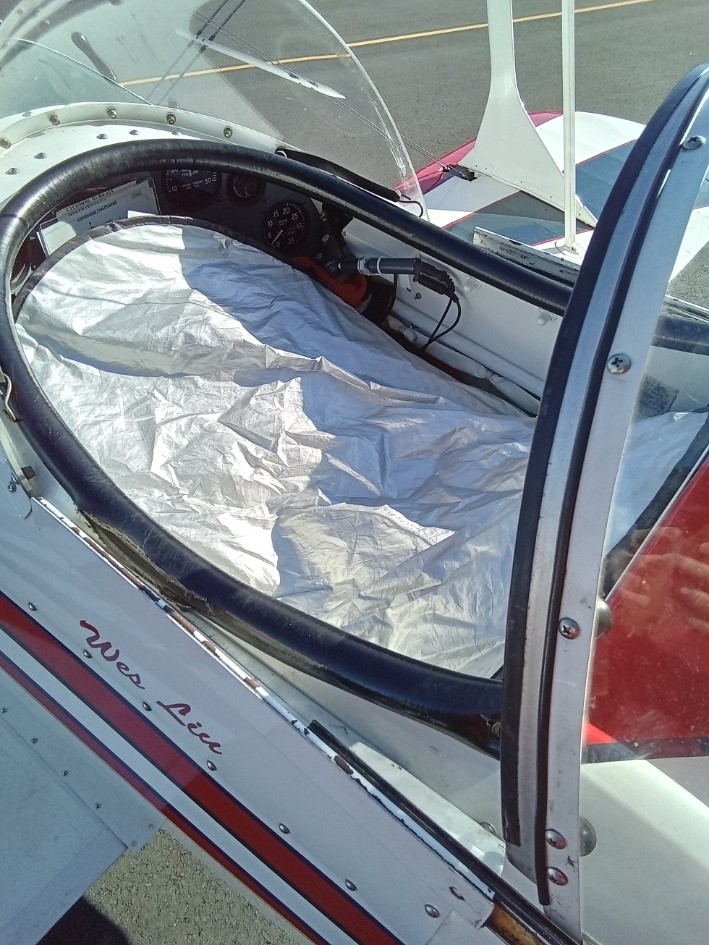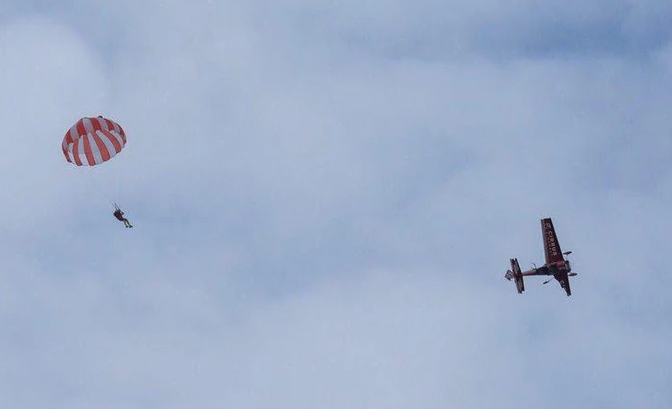
Parachutes are pretty expensive seat cushions, aren’t they? Looking at the Softie Parachutes, Strong Enterprises, and National Parachute web sites I see prices are north of $2500. Worth a few minutes thought about the care and use of the one(s) that you fly with and might use someday.
First, if you were not already aware, sun and heat degrade your parachute assembly. Prolonged exposure to UV light weakens nylon and all of those rubber bands that hold the parachute lines in the container weaken and get sticky with heat. Lines that sick together when you want an open parachute are not good.
Like many pilots I leave my parachute in the aircraft seat when it is out on the line at contests. I protect the parachute, and keep my cockpit cooler, by covering it with an inexpensive automotive reflective windshield sunshade. Folds up to fit in a Pitts turtledeck. Helps your parachute last longer, look better, and your seat won’t be so hot when you climb in for your contest flight.
When you are not flying with your parachute the best place for it is in a storage bag in a cool dry place. Which is to say that if you live in New England a shelf in your hangar will do but if you live in Arizona where your hangar temps hit 105F in the summer, better to take your parachute home to the AC.
We have to have our parachutes repacked by an FAA certificated Parachute Rigger every 180 days. After the 180 days it is good practice to put your parachute rig on in your living room, stand facing away from your couch or comfy chair, and pull the ripcord. Put both hands in it and try to touch your toes with it. The FAA says that it should not take more than 22lbs of pull force. And there is a spring-loaded pilot parachute that should come flying out. You can gather your parachute up into a plastic bag and deliver it to your friendly parachute rigger. There might be a closing loop on the floor so check that all of the parts that fall out of the parachute rig’s container go in the bag for the rigger. This familiarity will help if you ever find yourself in a jam.

Every one of the manufacturers has packing instructions on their web site. And they update them every so often. Ask the rigger if they have the latest instructions for your specific rig. About once a year a rig comes into my shop still packed, and when I pull the ripcord on my packing table I look in and wonder which wrong instructions were used by the last individual who packed the parachute. In this time when we all are on the internet it should be easy for your local parachute rigger to answer “yes” to your question(s).
If you have any doubts about whether you can get out of your airplane you can ask Nigel Hopkins, Marco Bouw, Dan Marcotte, or Sean Tucker. Their airplanes broke, they reacted, and they got open parachutes. If they can do it, you and I can too.
Take care of your expensive seat cushion and hope it never has to take care of you. Blue Skies.


